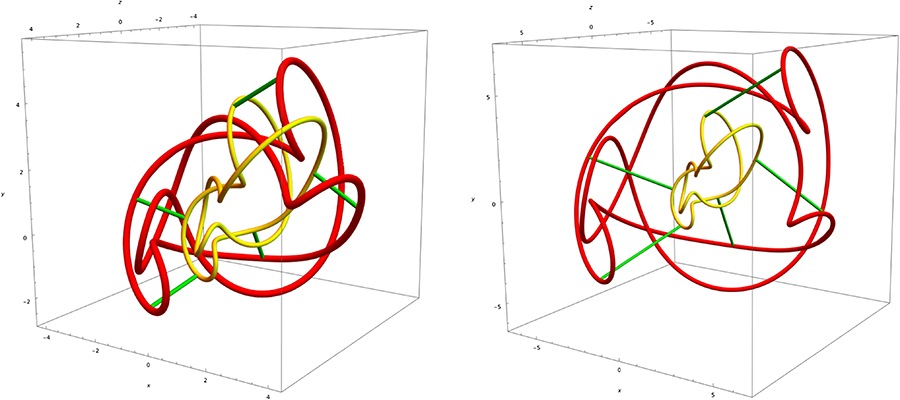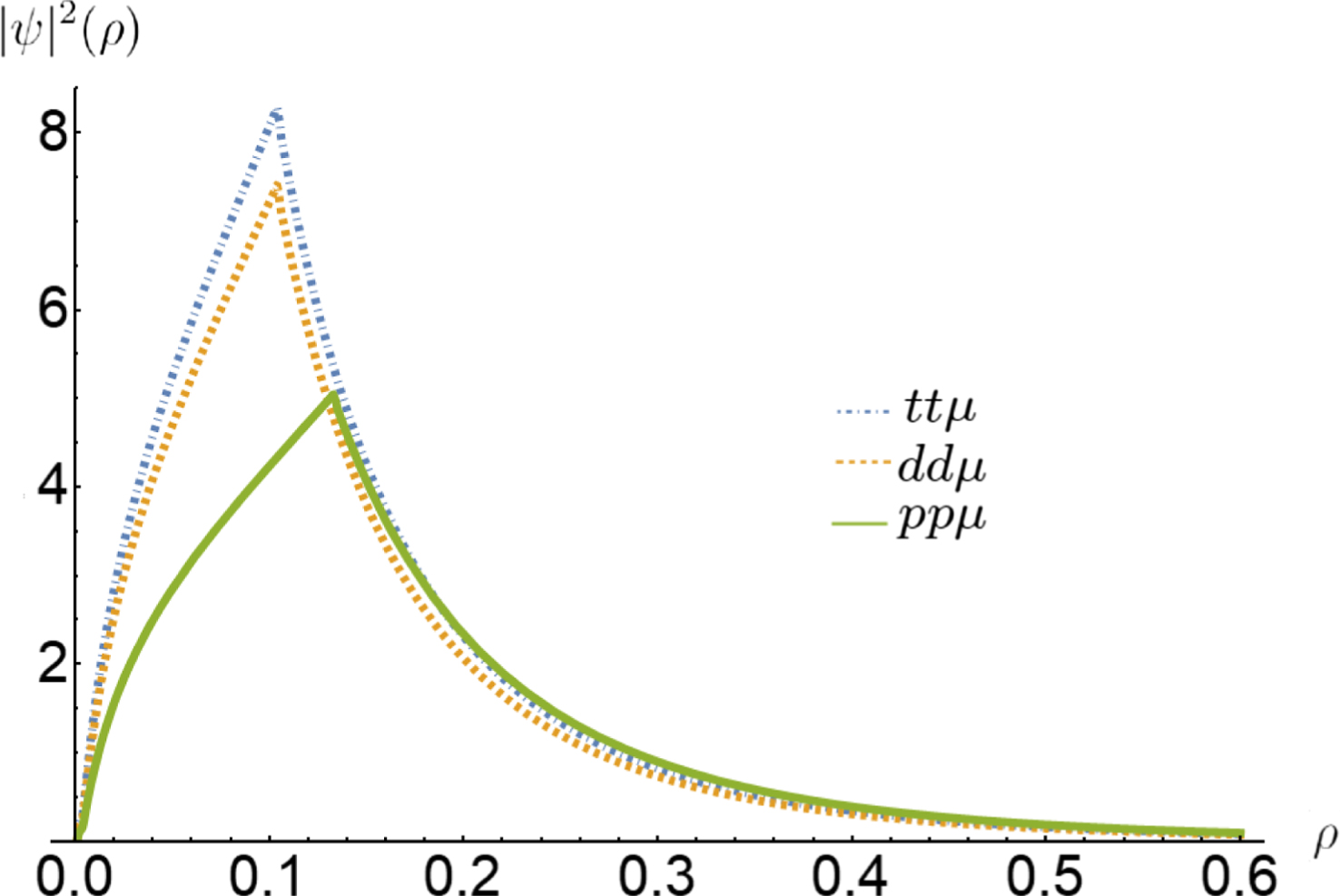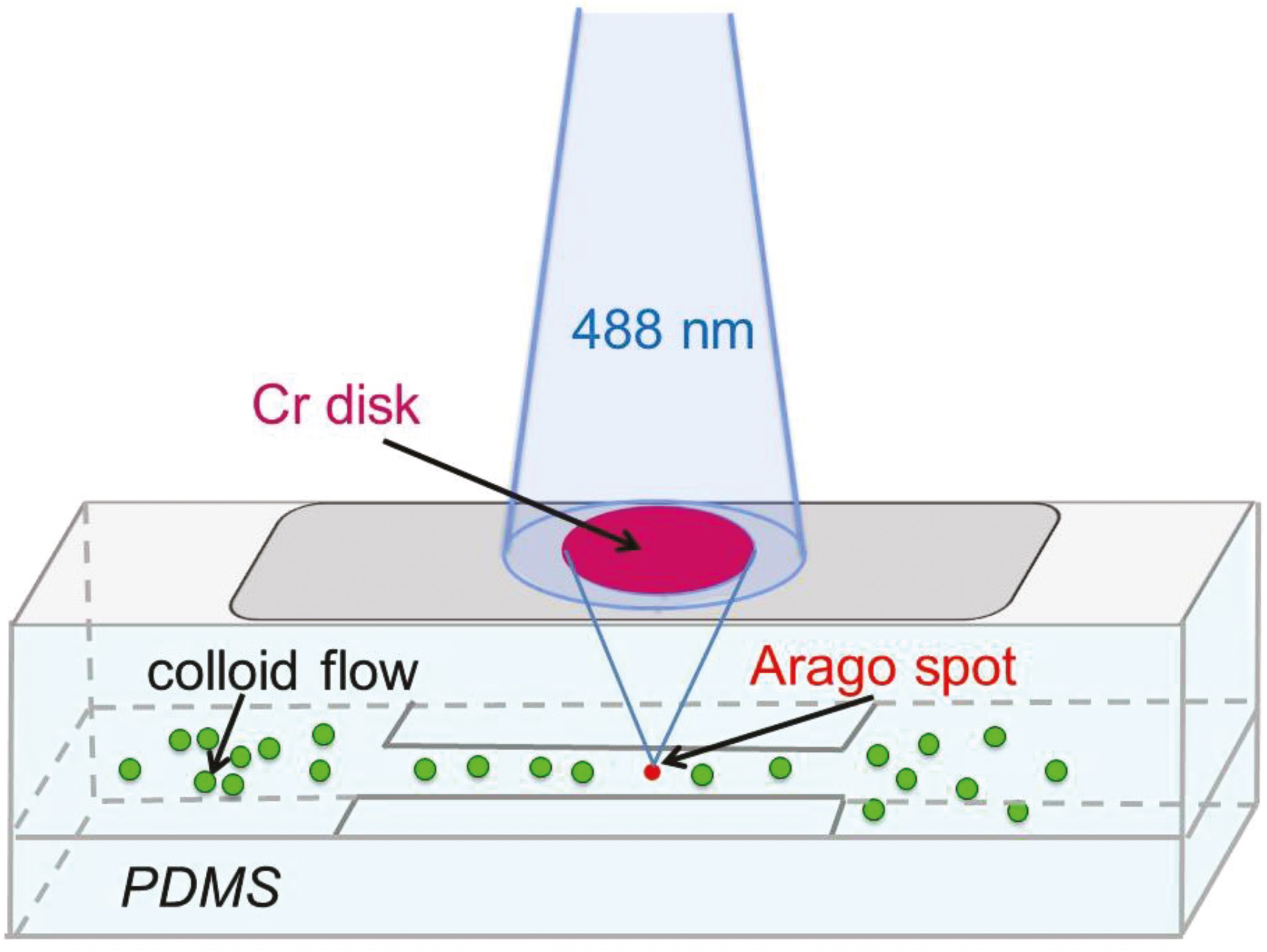News
EPJ C Highlight - Tracking the evolution Maxwell knots
- Details
- Published on 15 January 2021

New research investigates the properties of particular solutions of Maxwell equations, tracking their evolution over time and determining a route to combine them with other systems.
Maxwell equations govern the evolution of electromagnetic fields with light being a particular solution of these equations in spaces devoid of electric charge. A new study published in EPJ C by Alexei Morozov and Nikita Tselousov, from the Moscow Institute of Physics and Technology and the Institute of Transmission Problems, Russia, respectively, details peculiar solutions to the Maxwell equations—so-called Maxwell knots. The research could have applications in the fields of mathematical physics and string theory.
EPJ Plus Focus Point on Solitons, Integrability, Nonlinear Waves: Theory and Applications
- Details
- Published on 15 January 2021

Nonlinear waves have long been at the research focus of both physicists and mathematicians, in diverse settings ranging from electromagnetic waves in nonlinear optics to matter waves in Bose-Einstein condensates, from Langmuir waves in plasma to internal and rogue waves in hydrodynamics. The study of physical phenomena by means of mathematical models often leads to nonlinear evolution equations known as integrable systems. One of the distinguished features of integrable systems is that they admit soliton solutions, i.e., stable, localized traveling waves which preserve their shape and velocity in the interaction. Other fundamental properties are their universal nature, and the fact that they can be effectively linearized, e.g., via the inverse scattering transform, or reduced to appropriate Riemann-Hilbert problems. Moreover, solutions can often be derived by the Zakharov-Shabat dressing method, by Backlund or Darboux transformations, or by Hirota’s method. Prototypical examples of such integrable equations in 1+1 dimensions are the nonlinear Schrödinger equation and its multicomponent generalizations, the sine-Gordon equation, the Korteweg-de Vries and the modified KdV equations, etc. In 2+1 dimensions the most notable examples are the Kadomtsev-Petviashvili (KP) equations, and the Davey-Stewartson equations. The aim of this special issue is to present the latest developments in the theory of nonlinear waves and integrable systems, and their various applications.
EPJ C: Jocelyn Monroe new Editor-in-Chief for Experimental Physics II: Astroparticle Physics
- Details
- Published on 08 January 2021

The publishers of The European Physical Journal C – Particles and Fields are pleased to announce the appointment of Professor Jocelyn Monroe as new Editor-in-Chief for Experimental Physics II: Astroparticle Physics replacing Professor Laura Baudis.
Jocelyn Monroe, head of the Astroparticle Physics Group at Royal Holloway, University of London, is an expert on dark matter direct detection and the interface with neutrino physics. Her research interests include experimental dark matter searches, low-energy neutrino physics and detector development for rare event searches.
EPJ Data Science appoints Dr. Ingmar Weber as co-Editor-in-Chief
- Details
- Published on 07 January 2021

EPJ is pleased to announce that Dr Ingmar Weber of Qatar Computing Research Institute (QCRI) has been appointed as a co-Editor-in-Chief for EPJ Data Science, effective January 2021. He will be responsible for overseeing the editorial process of the journal, working closely with Prof Markus Strohmaier, who continues to serve as co-Editor-in-Chief. Ingmar Weber is the Research Director for Social Computing at QCRI where his research focuses on using social media and other non-traditional data to study phenomena such as international migration, digital gender gaps, and wealth inequalities. Of particular interest is how such data can be used to provide better statistics on global development and how, in turn, such statistics can be used for better interventions and policy decisions. This work is done in close collaboration with different United Nations entities and NGOs. Ingmar Weber currently serves as an ACM Distinguished Speaker and is a Senior Member of AAAI, IEEE, and ACM. He has been a member of the Editorial Board for EPJ Data Science since 2018.
EPJ WOC - EPJ WOC offers fast publication amongst many benefits – excellent performance in 2020
- Details
- Published on 22 December 2020

We are proud to highlight that EPJ Web of Conferences, the open access platform devoted to the publication of scientific conference proceedings, has received outstanding feedback from conference organisers regarding publication times in 2020. Indeed, for many, this is now one of the main reasons for choosing EPJ Web of Conferences.
We strive to publish proceedings quickly to enable the dissemination and discovery of research amongst the academic community. On average, we publish proceedings online within just 2 weeks for standard conferences and 3 to 4 weeks for larger conferences (involving around 200 papers). These are excellent turnaround times and a testament to our efficient processes, dedicated and responsive team, and understanding of our partners’ needs.
EPJ D Highlight - Characterising cold fusion in 2D models
- Details
- Published on 15 December 2020

A new 2D modelling approach has been used to directly calculate how hydrogen nuclei fuse into helium after capturing muons
Progress towards ‘cold fusion,’ where nuclear fusion can occur at close to room temperatures, has now been at a standstill for decades. However, an increasing number of studies are now proposing that the reaction could be triggered more easily through a mechanism involving muons – elementary particles with the same charge as electrons, but with around 200 times their mass. Through a study published in EPJ D, researchers led by Francisco Caruso at the Brazilian Centre for Physical Research have shown theoretically how this process would unfold within 2D systems, without any need for approximations.
EPJ A Highlight - Automated symmetry adaption in nuclear many-body theory
- Details
- Published on 10 December 2020

The extreme cost of solving the A-nucleon Schrödinger equation can be minimized by leveraging rotational symmetry and, thus, enable the computation of observables in heavy nuclei and/or with high precision.
The associated reduction process, which amounts to re-expressing the working equations in terms of rotationally-invariant objects, requires lengthy symbolic manipulations of elaborate algebraic identities.
For the first time, this involved process is automated by a powerful graph-theory-based tool, the AMC code, which condenses months of error-prone derivations into a simple computational task performed within seconds.
The AMC program tightens the gap for a full automation of the many-body workflow, thereby lowering the time required to build and test novel quantum many-body formalisms.
EPJ E Highlight - Trapping nanoparticles with optical tweezers
- Details
- Published on 10 December 2020

By exploiting a particular property of light diffraction at the interface between a glass and a liquid, researchers have demonstrated the first optical tweezers capable of trapping nanoscale particles.
Optical tweezers are a rapidly growing technology, and have opened up a wide variety of research applications in recent years. The devices operate by trapping particles at the focal points of tightly focused laser beams, allowing researchers to manipulate the objects without any physical contact. So far, optical tweezers have been used to confine objects just micrometres across – yet there is now a growing desire amongst researchers to extend the technology to nanometre-scale particles. In new research published in EPJ E, Janine Emile and Olivier Emile at the University of Rennes, France, demonstrate a novel tweezer design, which enabled them to trap fluorescent particles just 200 nanometres across for the first time.
EPJ B Highlight - Predicting epilepsy from neural network models
- Details
- Published on 07 December 2020

Improved modelling techniques have enabled a group of researchers to better predict how damaging conditions in the brain can be triggered by complex dynamics in branching networks of neurons.
Within the staggeringly complex networks of neurons which make up our brains, electric currents display intricate dynamics in the electric currents they convey. To better understand how these networks behave, researchers in the past have developed models which aim to mimic their dynamics. In some rare circumstances, their results have indicated that ‘tipping points’ can occur, where the systems abruptly transition from one state to another: events now commonly thought to be associated with episodes of epilepsy. In a new study published in EPJ B, researchers led by Fahimeh Nazarimehr at the University of Technology, Tehran, Iran, show how these dangerous events can be better predicted by accounting for branches in networks of neurons.
EPJ B Colloquium - A colloquium on the variational method applied to excitons in 2D materials
- Details
- Published on 04 December 2020

Two-dimensional (2D) materials are condensed matter systems whose thickness varies from a single atom, as in graphene, to few atoms, as in transition metal dichalcogenides (TMDs). These exceedingly thin materials present, nevertheless, strong light-matter interaction.




